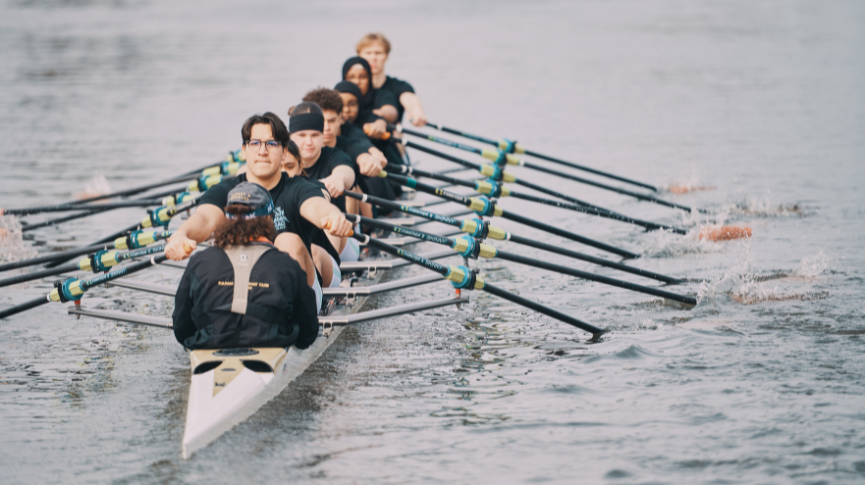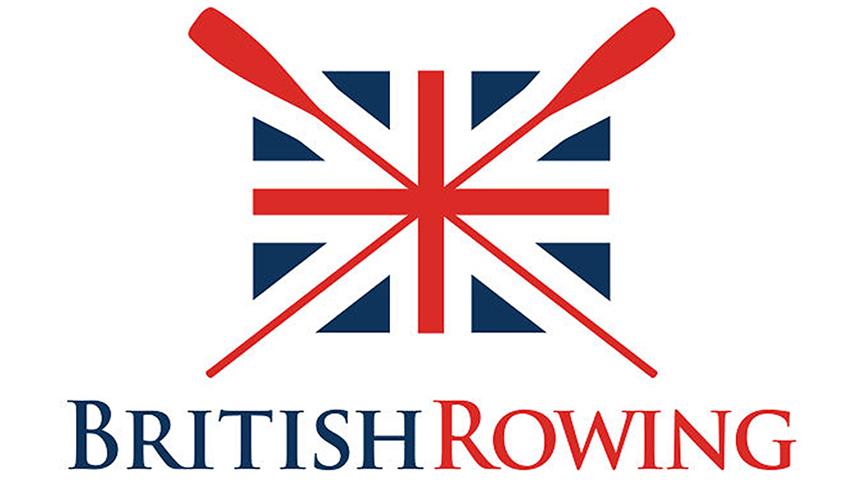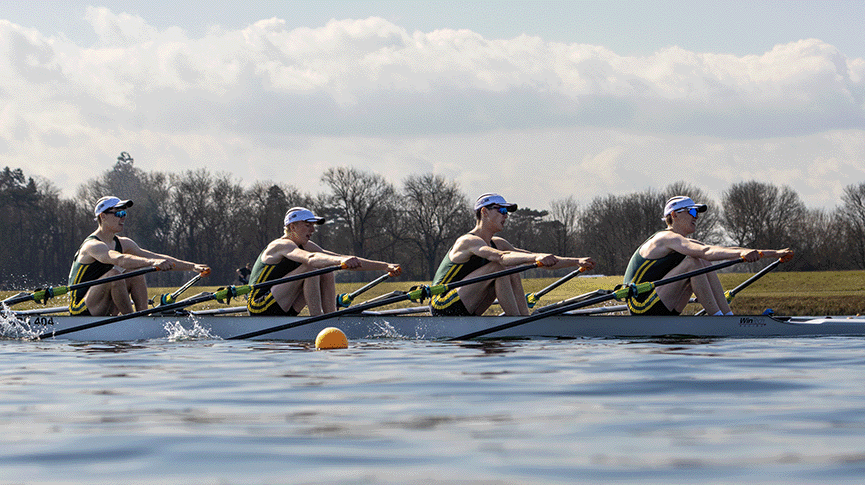Technical spotlight: sweep rowing tips
Hugo Gulliver, Chief Coach University of London BC, and Richard Chambers, Women’s High Performance Coach at Oxford Brookes University, share advice for sweep rowing

As rowing slowly begins to return to normal, Hugo Gulliver and Richard Chambers spotlight sweep rowing technique. Back in June, they presented a British Rowing webinar on sweep rowing so we asked them for their technical insights.
Hugo’s tips
1 – Sweep rowing has to be a team sport. The team size may be two people or 50+ people but, regardless of size, all athletes and coaches must make sure they are creating and enhancing an environment which is encouraging everyone to be the best versions of themselves.
2 – If training in eights, then don’t underestimate the usefulness of rowing in sixes for the majority of the outing quite often. With regular pair swaps, heart-rates can be maintained, so there is still physiological benefit to the session, but the secure platform allows the athletes to focus on a technical point without the distraction of balance and the need to set the boat. Sixes will often also allow you to run two or more eights side-by-side with greater ease.
Connecting the blade effectively in a fast-moving eight is a tough skill, and often overlooked
3 – Achieving a strong position at quarter slide on the recovery is really important. Pausing drills to where the athletes feel their ‘weight is over’ I find more useful than pausing at an arbitrary position like ‘bodies over’ or ‘quarter slide’. Both the rowing machine and strength and conditioning also present plenty of opportunities to strengthen this position.
4 – Inside-arm only (outside-arm off) is a drill you’ll see a lot of American crews use but is less commonly used in the UK. Do the drill with a square blade, legs only, starting off the front. It highlights to the athlete how to accelerate the blade in the water using the hips and glutes.
5 – When an eight is at top speed it’s moving fast. Connecting the blade effectively in a fast-moving eight is a tough skill, and often overlooked. Don’t be afraid to throw very high-rate bursts into sessions at points in the season some wouldn’t normally expect you to, like early and mid-winter.
Sculling tips
If sculling is more your thing, then don't miss these top tips!
Richard’s tips
Do the basics right and don’t over complicate the rowing stroke.
1 – Start with how you hold the handle. You can have a relaxed grip whilst keeping a good hold of the handle. Keep your knuckles over the handle and your thumb tucked under. This will mean you can get a more effective transfer of power to the end of the spoon earlier in the drive phase.
Roll ups throughout an outing can help improve a crew’s togetherness on the recovery and catch placement
2 – At the beginning of the season keep the movements steady and controlled. Around the finish, as the blade releases from the water, have a steady and controlled movement of the hands away. I prefer to see a slight pause at the finish to emphasise this. This allows scratch crews to find a reference point that they can move together from, allowing crews to come together quicker.
3 – If rowing in eights, then spend at least half of the session rolling around in sixes. Pausing drills and continuous rowing will allow the rowers to figure out rhythm and technical points with a fast-moving shell that is also stable.
4 – Roll ups throughout an outing can help improve a crew’s togetherness on the recovery and catch placement. With the Cambridge reserve crews (Goldie), we used to do a lot of them, so that on race day the first stroke they took from the embankment was all eight full slide – practised and done right this can give so much confidence to any crew and can be quite intimidating to others!!!
5 – Give your athletes the opportunity to learn to steer in pairs in an unpressured environment. No stopwatch, just guidance and help. Small movements with the steering foot will be more effective than full lock with the rudder. Steer with your foot at the finish of the stroke and look round every five strokes, if on a river. The more time you spend steering the more natural it will become.







